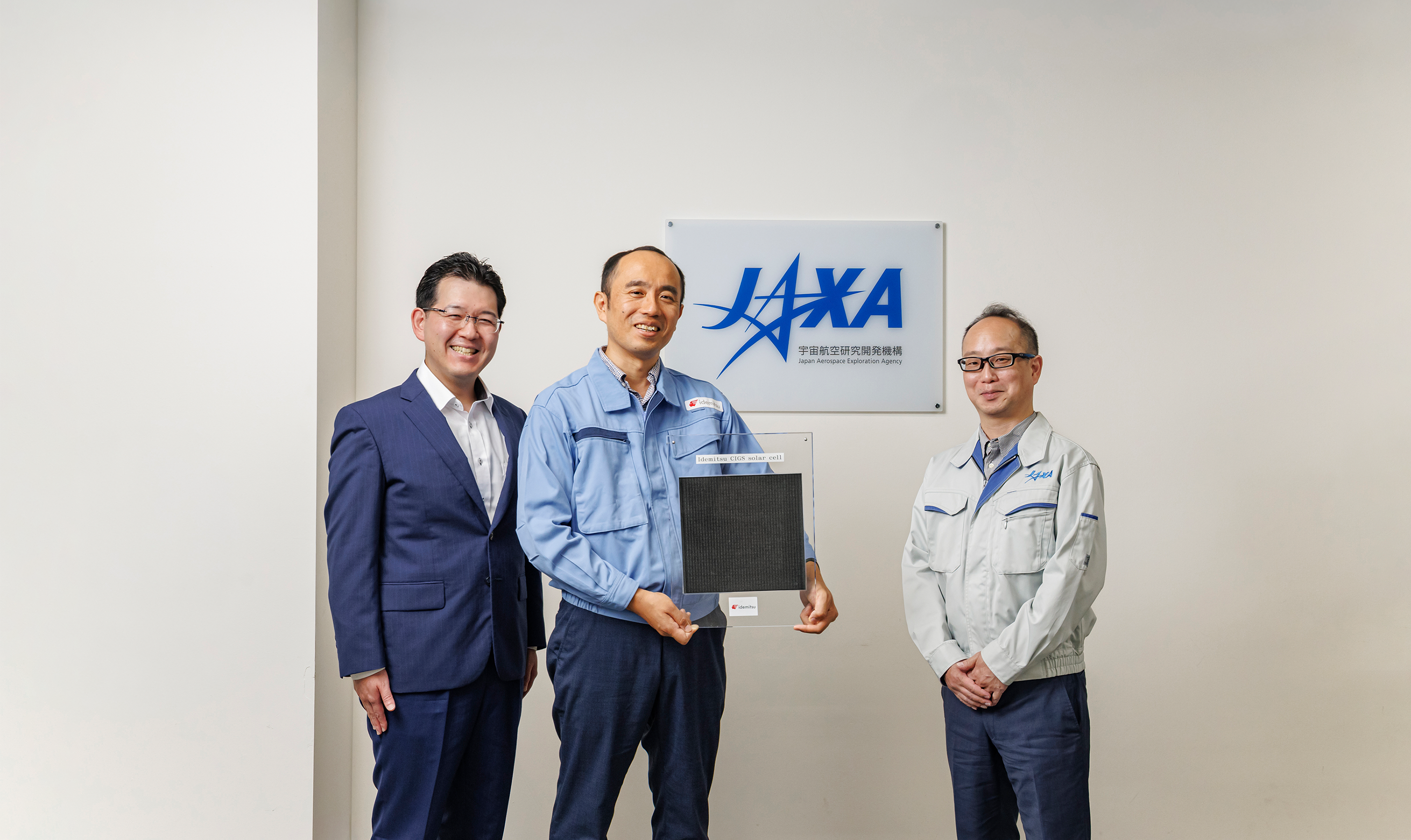
「CIGS太陽電池」で
宇宙開発に無限の可能性を
心躍る未来を切り拓くのは
新規事業への飽くなき挑戦
-
 JAXA
JAXA
Research and Development Directorate Research Unit IT. OKUMURA -
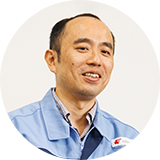 Idemitsu Kosan Co.,Ltd.
Idemitsu Kosan Co.,Ltd.
Innovation Center Advanced Technology Research Laboratories
Advanced Inorganic Materials Research LaboratoryH.TOMITA -
 Idemitsu Kosan Co.,Ltd.
Idemitsu Kosan Co.,Ltd.
Innovation Center Innovation Strategy Department
Strategy & Business Planning Office New Business Promotion GroupD.OGAWA
On October 26, 2025, the Japan Aerospace Exploration Agency (JAXA) launched the first new space station resupply vehicle (HTV-X1), which will transport supplies to the International Space Station (ISS). After several months of tethering, the vehicle will depart from the ISS and conduct several technology demonstration missions in orbit. One of these missions, the "SDX" orbital demonstration of next-generation space solar cells, employs CIGS solar cells developed by Idemitsu Kosan's Innovation Center. We invited two people working on the commercialization of space solar cells and a JAXA official who led the SDX project as guests to conduct interviews on the theme of "breaking new ground."
T. OKUMURA
He was a member of a space-related laboratory at university and graduate school, specializing in the manufacturing of products that can withstand space plasma. He joined JAXA in 2012. Since then, he has been involved in the research and development of anti-static technologies for spacecraft and solar panels. He also serves as sub-leader of JAXA's Solar Panel Design Standards Committee. He led the development of various demonstration mission equipment in low orbit below an altitude of 2,000 km and contributed to its success. Leveraging this development experience, he led the "SDX" in-orbit demonstration of next-generation space solar cells, and is also the person who named the name SDX.
H.TOMITA
He majored in solid state physics at university and graduate school. In 2012, he joined Solar Frontier, a subsidiary of Showa Shell Sekiyu. In the Technology Development and Product Development departments, he was responsible for improving the efficiency and reliability evaluation of CIGS solar cells. In 2019, he was seconded to Idemitsu Kosan following the business integration of Idemitsu Kosan and Showa Shell Sekiyu. In 2021, he participated in a space solar cell project and transferred to Idemitsu Kosan. As the technology development theme leader, he also serves as the liaison with JAXA.
D.OGAWA
He majored in chemistry at university and graduate school. He joined Idemitsu Kosan in 2008. After working at Performance Materials Laboratories and the Lubricants Division Lubricants Research Laboratory, he studied abroad at the Swiss Federal Institute of Technology Zurich for collaborative research from 2016 to 2019 (earning a Ph.D.). Since 2021, he has been promoting open innovation activities in the Functional materials business in Innovation Strategy Department. He has been in his current position since 2024. He is responsible for marketing and public relations for the space solar cell project.

壁にぶつかりながらも
新たな領域へ活路を見出す
研究開発を積み重ね
掴んだ事業の芽
With the oil crisis as a backdrop, attention was focused on the potential of solar cells
Idemitsu Kosan is developing next-generation solar cells for space applications. While this may seem far removed from the image of a company generally known for "oil," Idemitsu Kosan actually has a long history in this field. The origins lie in the 1970s oil crisis, which prompted oil companies to explore alternative energy sources and new business areas. At that time, Idemitsu Kosan began developingOLED materials and lithium solid electrolytes. Meanwhile, Showa Shell Sekiyu, which would later merge with Idemitsu Kosan, saw potential in solar cells and started research and development in 1978*1.
H. TOMITA"The CIGS solar cells used in JAXA's in-orbit demonstration of next-generation space solar cells (Space solar cell Demonstration instrument on HTV-X: SDX) were the subject of full-scale research and development starting in 1993, and were commercialized in 2005. However, at the time, the business was focused on general-purpose applications on Earth."
"CIGS" stands for copper, indium, gallium, and selenium. CIGS solar cells are made using compound semiconductors made from these elements as a thin-film light-absorbing layer.
H. TOMITA"Since joining the company, I have been working on research and development of general-purpose solar panels using CIGS. In 2019, Showa Shell Sekiyu and Idemitsu Kosan merged, and at the time the market for terrestrial solar cells was in a very tough situation, known as a red ocean, with only cost being emphasized. It was in 2020 that the new field of 'space' was clearly established within the company."
- Activities by Showa Sekiyu at the time. In 1985, Showa Sekiyu and Shell Sekiyu merged to form Showa Shell Sekiyu.

In 2020, the new Idemitsu Kosan's Advanced Technology Research Laboratories launched a project to inventory the technologies and materials that had been developed by Showa Shell and Idemitsu and explore new applications for them.
At that time, CIGS solar cells were found to have potential applications in outer space, where they are exposed to strong radiation, due to their "high radiation resistance" characteristics. This decision was also supported by the fact that the technologies necessary for "mass production" and "high efficiency" had been accumulated through many years of research and development. Thus, the "Space Solar Cell Project" was launched.
D. OGAWA "I joined the project in 2024. Both space and solar cells were unknown business areas to me, so to be honest, I was a bit confused when the transfer was announced. However, I've always been a big space fan, and even had posters of the solar system hanging on my wall since I was a child (laughs). With the support of my boss at the time, I was inspired by the challenging mission of pioneering a new field in space."

JAXAの導きのもと
「宇宙仕様」の
視点と発想を
着実に獲得
Aiming to reduce the cost of "triple-junction solar cells," Idemitsu, with its track record in CIGS solar cells, was singled out
This time, SDX will conduct parallel demonstrations of "PHOENIX," a three-layer solar cell jointly developed by another supplier, Idemitsu Kosan, and JAXA, as well as Idemitsu Kosan's CIGS solar cell alone.
T. OKUMURA"Until now, we have been using 'triple-junction solar cells', which consist of three layers of thin-film solar cells stacked on a single type of wafer (a thin, disc-shaped substrate made of semiconductor material). However, this was expensive, and we had no choice but to limit its use to satellites that prioritize performance, such as scientific satellites. Therefore, we decided to test the idea of leaving the top two layers as they were and bonding a CIGS solar cell, which can be manufactured at lower cost, as the third layer. This is 'PHOENIX'. Specifically, a thin-film dual-junction solar cell and a CIGS solar cell are bonded together. Once we decided to use a CIGS solar cell for the third layer, we approached Idemitsu, which has extensive development experience, to cooperate."
H. TOMITA"When building something that can withstand the elements of space, what kind of challenges do we face and what approaches are possible? At first, we hadn't thought through the prerequisites, so we conducted numerous tests while receiving a lot of advice from JAXA. Also, during meetings, the JAXA staff would often use "space language" that I didn't understand, so I would often ask questions on the spot or look it up later."

T. Okumura"In space, we need to deal with environmental conditions that are completely different from those on Earth. The most distinctive feature is constant exposure to strong radiation. Temperatures also vary greatly, ranging from approximately -100°C to +100°C. Radiation in particular directly leads to a deterioration in the performance of solar cells, so we need to keep in mind the need to 'create products that can withstand radiation.' This is something that is difficult to understand at first unless you have experience developing for space applications."
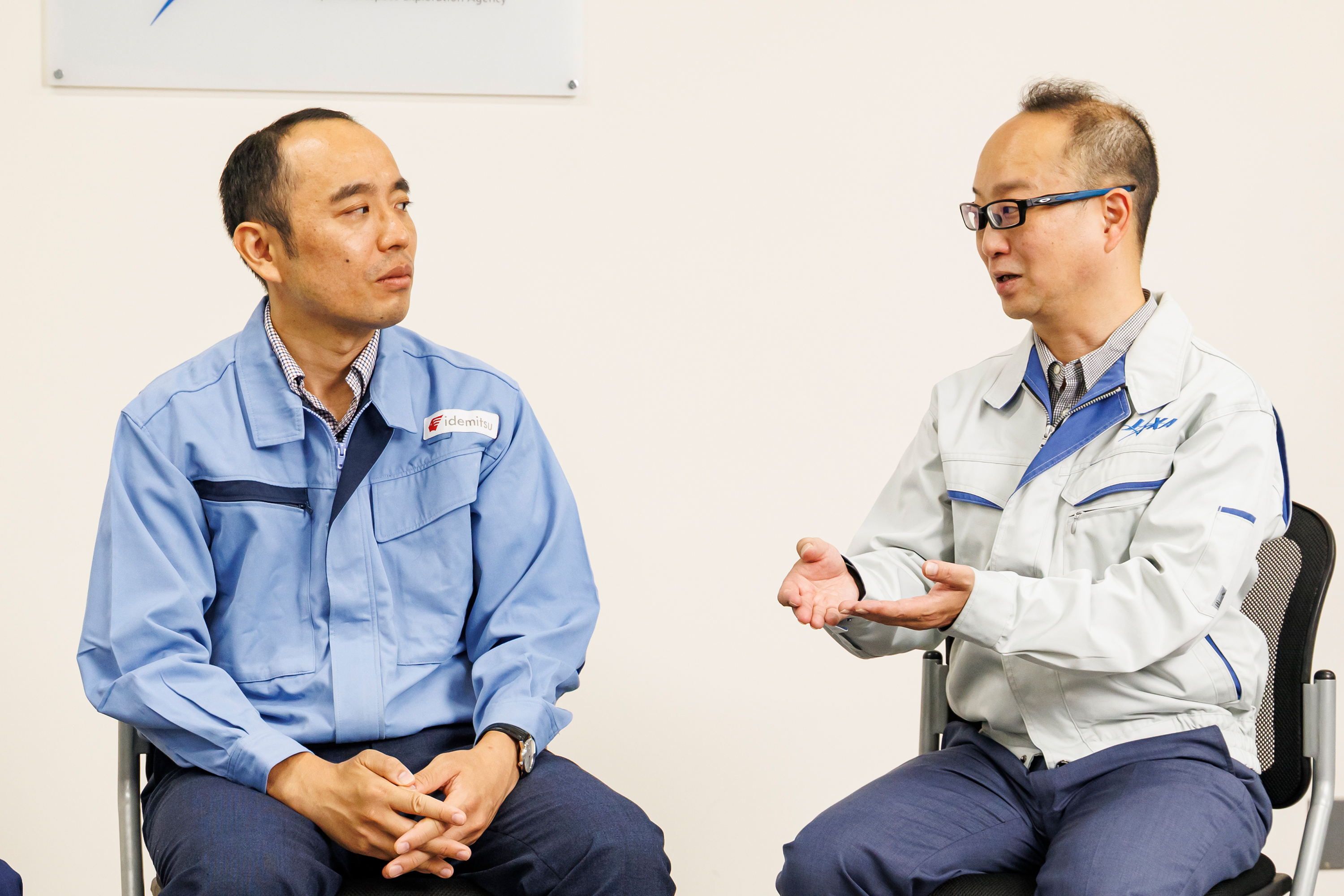
"For ground use" and "for space use": Overcoming the gap caused by the significant difference in the environments
H. TOMITA"I think that understanding the space specification standards was certainly the first hurdle. Also, while strictness is required in terms of reliability, we were surprised to find that methodological approaches that, in our opinion, did not seem suitable for space were actually effective. As I mentioned earlier, PHOENIX uses dual-junction solar cells and CIGS solar cells bonded together, and I was surprised when they suggested that we use adhesive to bond them together. They said, 'You don't need to weld!' (laughs) JAXA has thoroughly verified and accumulated information not only about adhesives, but also about whether they are suitable for use in a space environment and what precautions need to be taken when using them. JAXA taught us each and every point that needs to be taken into consideration when manufacturing for space applications, and also conducted various reliability evaluation tests on our solar cells. In the process, our CIGS solar cells gradually became suitable for space applications, and we, who were previously just 'earthlings', were gradually becoming 'aliens' who could understand the 'language of space' (laughs)."
T. Okumura"A satellite cannot function without electricity. For this reason, solar cells are an extremely important part of a satellite. Also, once a satellite is launched, it is not possible to immediately go and replace it if a malfunction occurs. This makes high reliability all the more important. With solar cells, we first conduct radiation irradiation tests on Earth using cells about 2 cm square, and then demonstrate them in space. Once that is clear, we evaluate cells the same size as the actual product, and finally evaluate panels made up of multiple cells. Development proceeds step by step, with tests being conducted on cells the same size as the actual product. It is also important to verify whether the product can withstand the vibration environment during launch and the thermal cycle environment in orbit."
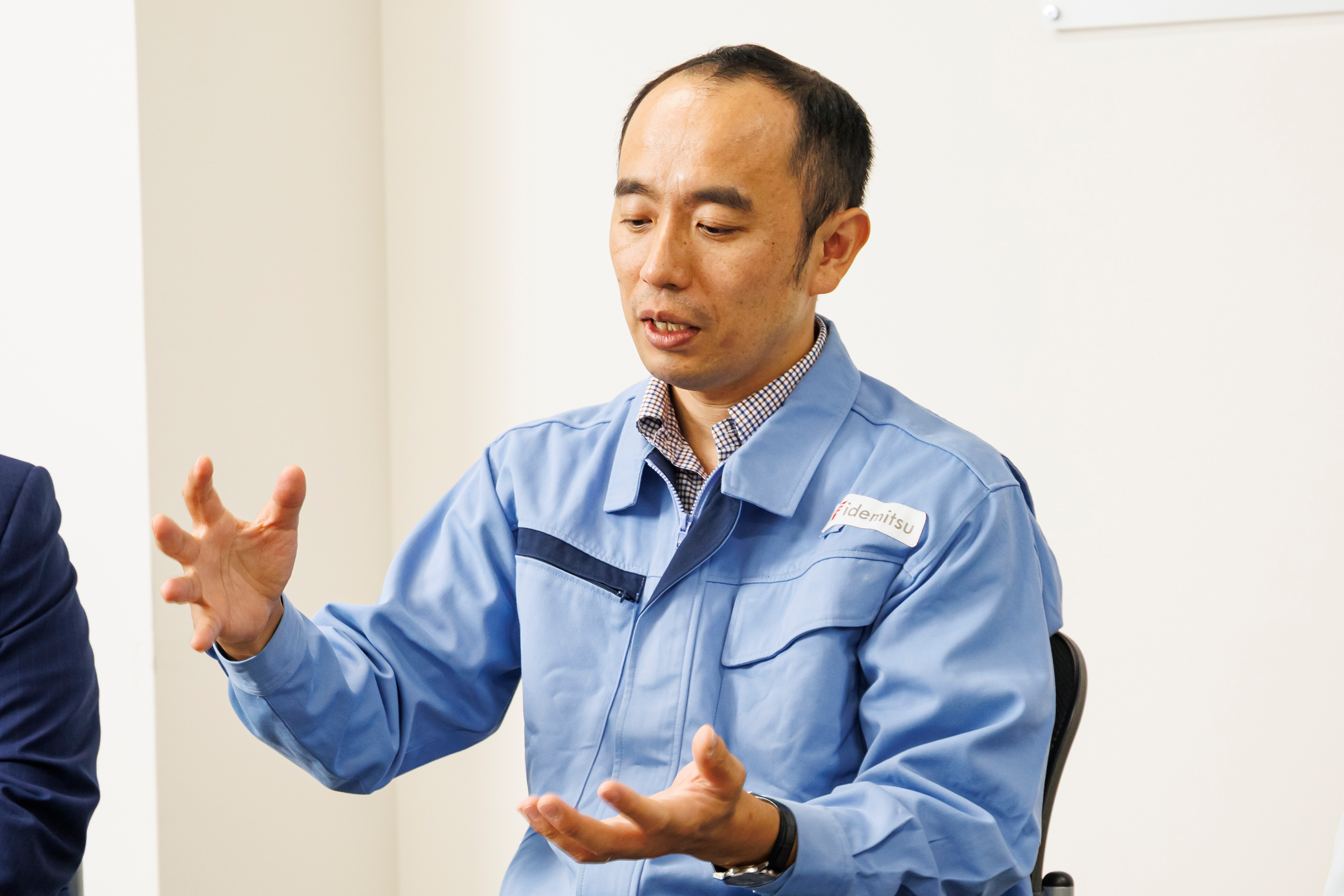
Into unknown territory. Demonstration brings greater expectations than anxiety
In addition to PHOENIX, SDX will also be demonstrating CIGS solar cells alone, which was made possible through the efforts of Idemitsu Kosan.
H. TOMITA"Frankly, I approached them because I wanted to see the capabilities of CIGS solar cells on their own. We live in a world where track record is always important, so when I propose something to a client, they always ask me, 'Have you actually sent it into space?' The top two layers of PHOENIX are good at absorbing short-wavelength light, so the third layer, the CIGS solar cell, receives mainly long-wavelength light. On the other hand, with a standalone CIGS solar cell, all light, from short to long wavelengths, reaches the CIGS. As for the results of SDX, my expectations outweigh my concerns for both PHOENIX and the standalone solar cells. Since it's impossible to predict what will happen in space, I'm looking forward to seeing the results of both demonstrations."
T. Okumura"Developing PHOENIX was extremely challenging, but we worked well with the supplier of dual-junction solar cells and were able to complete the development to a level that was suitable for installation on SDX. Additionally, installing the CIGS solar cells alone is also important for verifying their operation in orbit. We are grateful for the speedy provision of cells that can be used in space, which made this possible."

D. OGAWA"I'm very happy to hear that! Our research laboratory is staffed with members who are able to work together to meet the expectations of our partners. We tackle even high hurdles with the full force of our team and strive to achieve them no matter what - being 'strong in times of emergency' is perhaps what Idemitsu is all about. Also, CIGS itself is a 'material' that originated in our Functional materials business, but what we are currently working on is a 'device' - a CIGS solar cell. We recognize that we have a unique position within Idemitsu, so we would like to use the results of the SDX demonstration to develop our next venture."
H. TOMITA"JAXA accompanied us throughout the development period. From providing the equipment for the test environment, to advice on conducting the tests, and even how to interpret the results. None of this was possible on our own. Before we got involved, I felt that JAXA, a global organization, was intimidating, but I was grateful that we were able to have frank discussions from the very beginning. JAXA also had a very strong desire to 'achieve provide for society of space-use CIGS solar cells,' and I believe it was because we had this common ground that this development was able to proceed so smoothly."

CIGS太陽電池の
可能性を信じ
エネルギー企業として
宇宙開発へ貢献
First, we confirmed that it was functioning properly in orbit. Then...
SDX is scheduled to take place over a period of approximately two months after the HTV-X1 completes its resupply mission to the ISS. While it will be some time before results are available (as of November 2025), both Idemitsu Kosan and JAXA have high hopes for future developments.
D. OGAWA"In the future, we would like to see Idemitsu's CIGS solar cells widely used in satellites with a variety of purposes, including communications, Earth observation, and even defense. CIGS solar cells, which have excellent radiation resistance, will increase the possibility of launching satellites into locations that have previously been avoided due to strong radiation. They should also be useful in operating existing satellites more cheaply and for longer periods. We want to become a company that customers will recognize as one that can be launched into these regions because of Idemitsu's CIGS solar cells."
Next, I would like to further evolve it into a solar cell that can generate electricity during lunar development and Mars exploration. Ultimately, as an energy company, I would like to contribute to the realization of the concept of 'space solar power generation,' which would utilize electricity generated in space on Earth."
H. TOMITA"I agree with you about space solar power generation. Of course, there are still areas that need improvement, but with the inherent strengths of CIGS as a material and Idemitsu's track record of mass production, I think this is something we should aim for, given our two advantages. I would love to build a giga-solar system in space in the future."
T. Okumura"It's exciting! I have high hopes for CIGS solar cells because they are an unprecedented low-cost solar cell. Space development is expensive. If we could turn CIGS solar cells into panels and use them to power satellites, a wider range of businesses would be able to launch more satellites. Internationally, businesses are emerging that handle everything from manufacturing to servicing small satellites, and CIGS solar cells should pave the way for Japanese businesses to build satellite constellations (operating multiple satellites in the same orbit in a coordinated, integrated manner). I hope that this SDX demonstration will lead to the speedy provision of such solar cells in the future."

事業環境の変化を
チャンスと捉え挑み続ける
挑戦を後押しする風土が
未来への可能性を拓く
Idemitsu's R&D culture carefully nurtures the seeds of new businesses
The adoption of CIGS solar cells in this SDX demonstration would never have been possible without over 30 years of accumulated research and development. Even when faced with headwinds at times, the company continues to nurture the seeds of new business. This corporate culture can be seen as an opportunity that has been brought about. Furthermore, this corporate culture of encouraging further challenges through proactive investment has shaped the Idemitsu Kosan of today, a company whose business can no longer be described simply as an "oil wholesaler."
Currently, Idemitsu Kosan is rapidly expanding its space solar cell project in order to expand its CIGS solar cell business.
D. OGAWA: "The project involves colleagues with a variety of backgrounds, including members who were involved in the mass production of terrestrial CIGS solar cells at Solar Frontier, and members with experience in launching new businesses and developing markets, in order to launch a space CIGS solar cell business. In addition, at Idemitsu Americas Holdings, our US base, which is at the forefront of the space solar cell market, we have also added a national staff member with a background in the space industry as a dedicated member of the project."
Idemitsu's CIGS solar cells were launched into space on the memorable first HTV-X to demonstrate SDX. This marks the beginning of a long journey that will leave its mark on space development projects both in Japan and overseas.
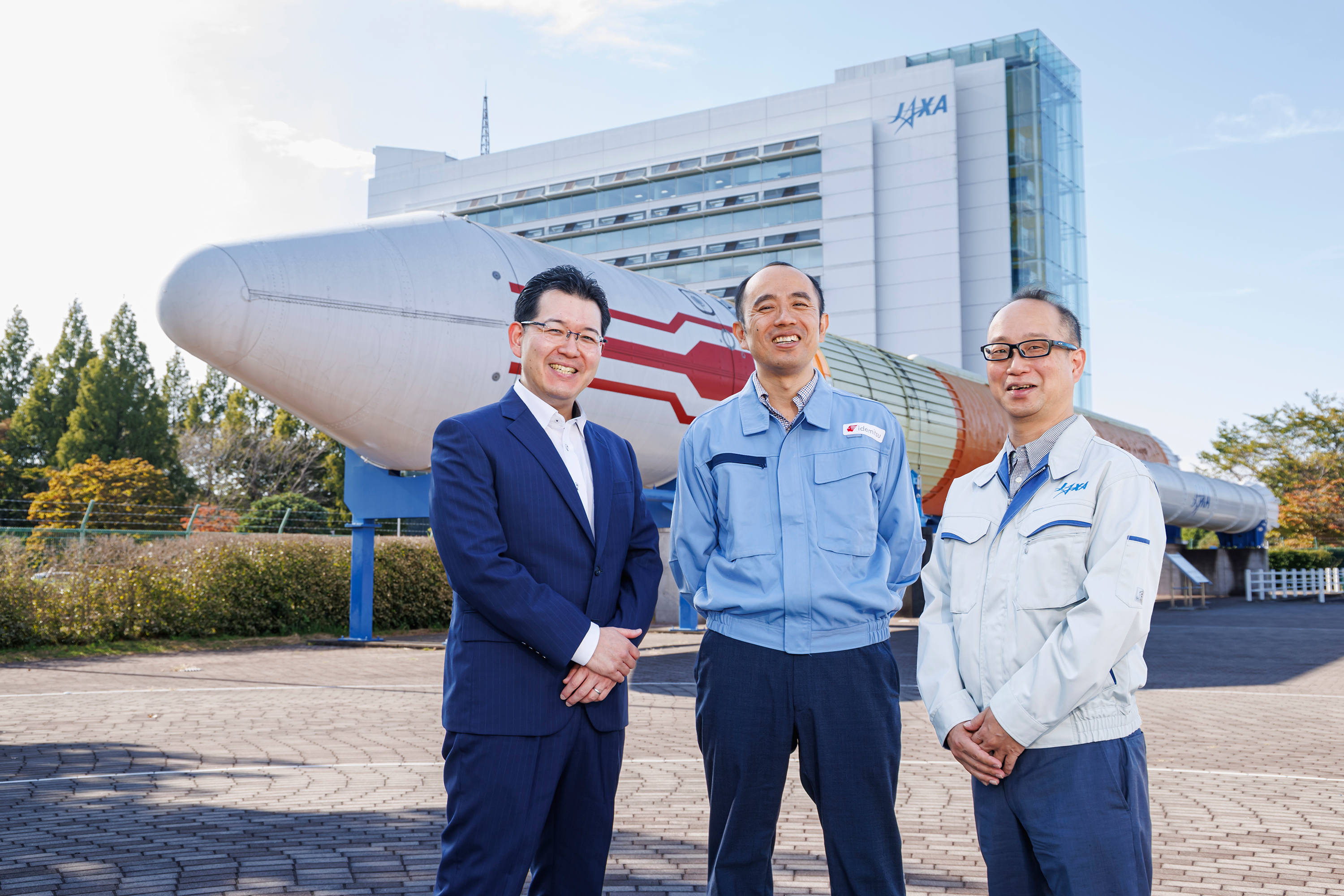
H. Tomita, in charge of technology development, and D. Ogawa, in charge of marketing and public relations, are both working hard to commercialize CIGS solar cells from different perspectives. We asked them about each other.
H.TOMITA:
"He's a model of complete sense of ownership."
Ogawa-san is not limited to marketing, but he takes the initiative in all tasks necessary to move this project forward (including this interview). Although he is now a hard-working salesman, he was originally a researcher, so we often have technical discussions together.
D.OGAWA:
"A reliable partner who can help me with various issues"
I visit overseas customers together with Tomita, and he is quick to spot technical difficulties and timeline issues related to customer requests that I might overlook. As he is the technology leader, I consult him immediately when there is something I don't understand about a technical aspect.
*As of November 2025
Related interviews
-

「人が中心の経営」
創業の精神を
守りながら、
未来を創り上げる。2025.01.30 UPHuman resources departmentT. SUGIUCHIR.IWAOY. NISHIYAMA -
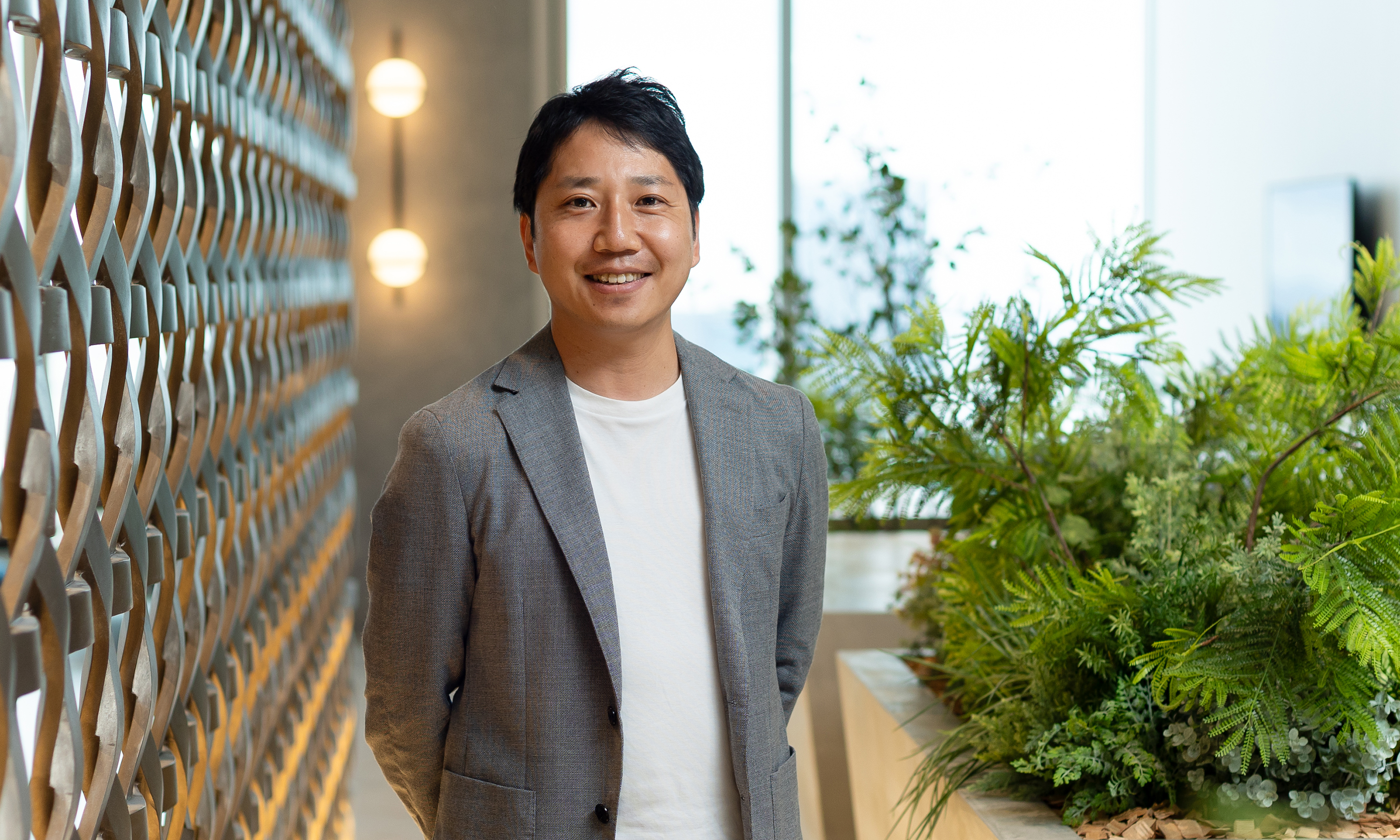
挑戦マインドの形成を
後押しする場づくりで
社員と出光興産の「今」を
「未来」へとつなげる。2025.07.17 UPHuman Resources Department Human Resources DivisionY. SHIZUNO -

柔軟な発想と不屈の情熱で
脱炭素に向けた現実的な選択肢
カーボンオフセット燃料を
社会に届ける2025.07.01 UPPetroleum Sales Planning Department, Planning & Coordination SectionH. WATANABE

